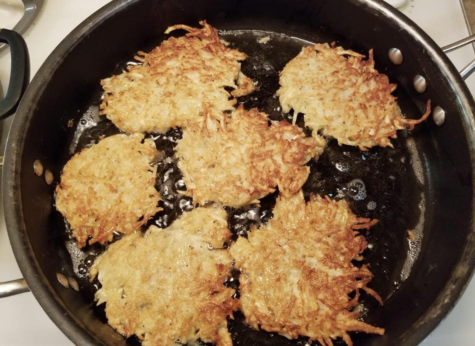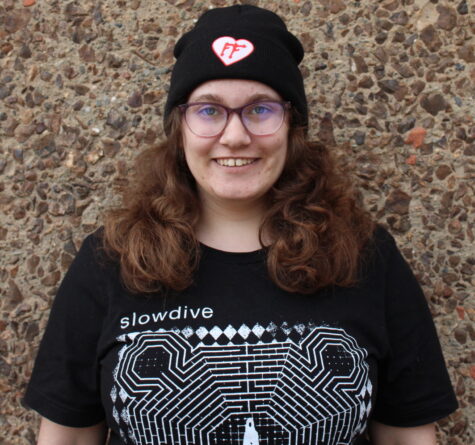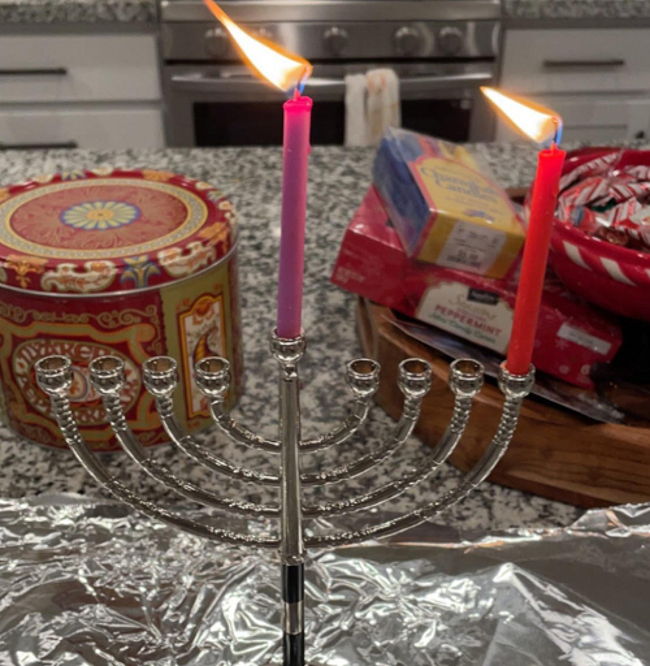The months of September to December are the best times of the year. The cold weather is quite pleasant, not to mention many people are suckers for anything gingerbread or pumpkin-spice related. However, my favorite thing about these months are the holidays. By holidays, I don’t mean just the typical holidays celebrated in the U.S. like Christmas, I also mean traditional Jewish holidays like Hanukkah.
Growing up in Mountain House, California, no one really celebrated Hanukkah and hence the stores around me like Target and the Dollar Store had no menorahs or other Hanukkah decorations. I mean literally, it was half an aisle. Even where I live now in Roseville, there are still few, even at stores like World Market. As I get older, I want to show off my Jewish heritage and educate others.
To find out what students at Sierra know about Jewish holidays I gave a survey. In the survey, eight out of nine students knew about one of the most well-known holidays, Hanukkah. One of the students even knew about Purim, a holiday that occurs in the spring, however they misspelled the word. No students mentioned Yom Kippur, the holiest day of the year for Jewish people. It occurred this year from Sept. 24-Sept 25. It is the holiest day of the year for Jewish people, and its history and why it’s celebrated should be more well-known.
Yom Kippur and Forgiveness
Yom Kippur may not be my favorite holiday because it’s a little boring, however it is vital for me to celebrate as a Jewish person. According to Judaism 101, Yom Kippur’s English translation is “Day of Atonement,” meaning a day to be forgiven for sins.
On Yom Kippur, it is a Sabbath so you cannot eat, drink, smoke, or work for twenty-five hours. However, you don’t have to follow it completely if it could negatively affect your health. Children under the age of nine, pregnant people, and anyone with a health condition can adjust it if needed.
A majority of the holiday is spent in a synagogue praying. A synagogue looks just like the inside of a Christian church, typically with one large room dedicated to prayer with a special cabinet called a Torah arch in the center to hold the Torah, the holy Jewish text. There is also a podium near the Torah arch where the Rabbi and/or leaders of services stand. During most services, the congregation often switches between bowing, sitting, standing, and facing towards the Torah/Torah arch while standing.
On the outside, most synagogues look like any ordinary building or even small businesses/doctor’s offices. Most Jewish people in the modern day don’t take off school or work to practice this religious tradition, as it is not recognized as a Federal holiday. However, it is the holiest day of the year for Jewish people.
Unfortunately, I have never missed school or work to observe and practice this holiday because of financial and educational reasons. When Yom Kippur happens every year, I do pray to God for forgiveness. My religion is an important part of my identity as well as important to my beliefs, hence me observing or celebrating as many Jewish holidays as I can.
Hanukkah And Greasy Goodness
One holiday my family and I do participate in every year is Hanukkah. When I was younger, my mother even came into my classroom during December every year to educate the students about Hanukkah and its significance. My favorite part of the holiday however is its food and history.

The story of Hanukkah starts off during the second century BCE. when Antiochus, a Syrian-Greek ruler, outlawed Judaism in order to make everyone convert to Hellenistic pagan worship. However, a man named Judah the Maccabee, along with a group of seven other Jewish people called the Maccabees, fought against Antiochus because they still wanted to practice Judaism.
Despite being such a small group of people, they won and reclaimed the Holy Temple in Jerusalem. They decided to light the menorah to give them warmth and light, but they only had one jar of oil which usually only lasts for one night. However it lasted for eight and thus, Hanukkah is celebrated for eight days. The way I see it, the reason this miracle is celebrated in modern times is to represent no matter what challenges Jewish people face, eventually we will overcome them.
Traditional foods eaten on or around Hanukkah include latkes (pronounced lot-kuhs), which are potato pancakes, anything (mostly dough) deep fried in oil, and gelt. Gelt are chocolate-shaped coins wrapped in golden foil, however, the color of the foil can vary. The reason why Jewish people eat food fried in oil is to represent the oil in the menorah lasting for eight days. The reason why Jewish people eat gelt is because in ancient times, coins were given to teachers from children as a gift of appreciation during Hanukkah. In modern times, it’s been reversed, with Hebrew school teachers now often giving their students bags of chocolate gelt around Hanukkah time. This tradition of giving coins also influenced modern Christian culture and currently, around Christmas, chocolate coins are also given to Christian children around Christmas time.
Why Care About These Holidays?
Sharing the culture and holidays of many religions shows just how diverse and beautiful this world truly is. I’m glad to share my culture and religion with others, and want to encourage others to share their culture and beliefs, too. I believe that if your religion is not understood well or underappreciated, you should happily share yours with others.
We often hear so much about Christian and Catholic holidays that other holidays don’t get enough light shed on them, such as Muslim, Jewish, and Buddhist holidays. By sharing holidays and culture with others, you not only enlighten yourself but help the broader community appreciate other cultures and holidays as well.
Written, Reported, and Photographed by Marissa Elizabeth Martens

